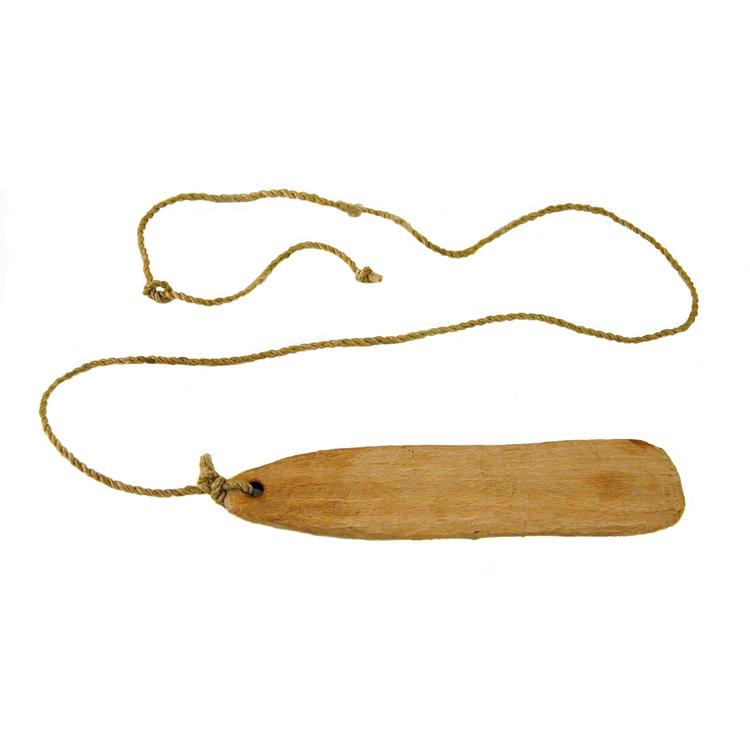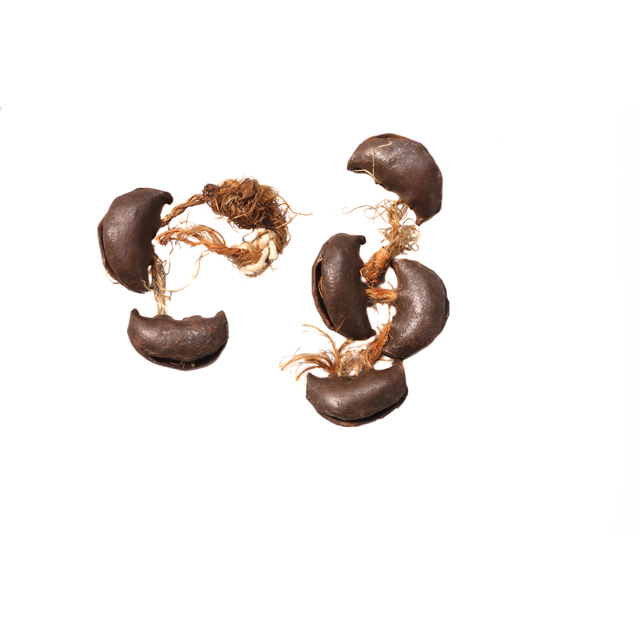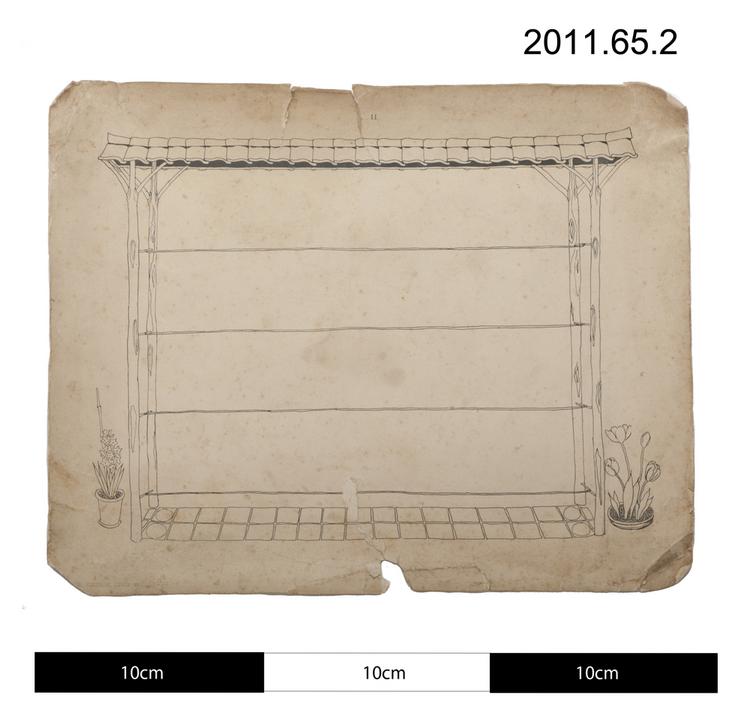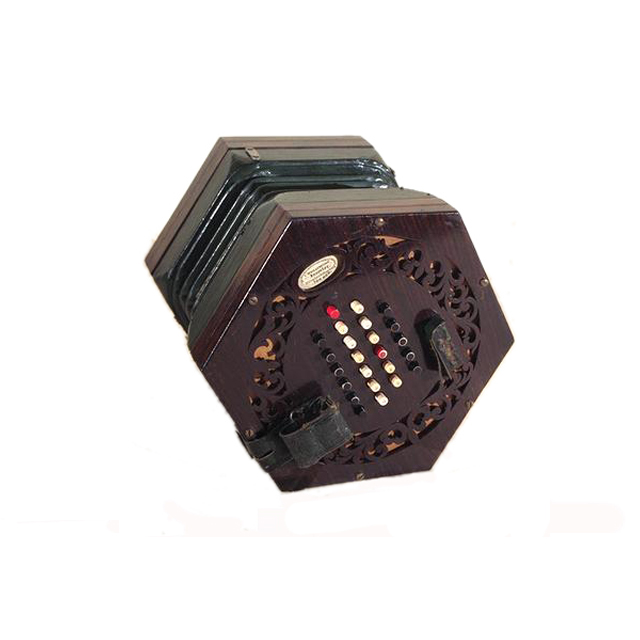
Wooden bullroarer 'imina na', miniature of a ritual instrument. Origin: Ireli (Arrondissement Sanga). Material: senge wood (Acacia albida) and cord. Played at night and referred to as imina ne (literally: the great mask/or the mother of the masks). It is said to be the voice of the mother of the masks and is a sound that is feared by women and children who don't know what makes the sound. When it is played: 1: Funerary rituals of men who have died who are 'amongst the masks'. (The player of the imina na stands on the flat roof of the hut of the deceased). 2: During a Dama: played at night in the village, as a warning to women and passers by that masks are out, and to stay away or keep indoors. 3: During the Sigi ritual; played by the olubaru whilst undergoing their three month initiation in the bush (see film reference for playing). Manner of playing: string whirled vigorously in the air to make low humming noise; the slower the movement, the lower the hum. The bullroarer is played usually in groups of three notes. The player usually does two quick whirls of the bullroarer and one slow (giving two quick high hums, followed by one slow). NB. Three is a number symbolic for men (four is for women) and many of the rites and movements concerning masks and men occur thrice. This object was commissioned; and it is possible in making an important ritual object, the maker decided to make a miniature version. (This occurred once before in Idale na; where the smith made a miniature version of the dani mask alter for me.)
Name 'Imina Na' (Polly Rrichards, collector).


































































































































































































































































































































































































































































































































